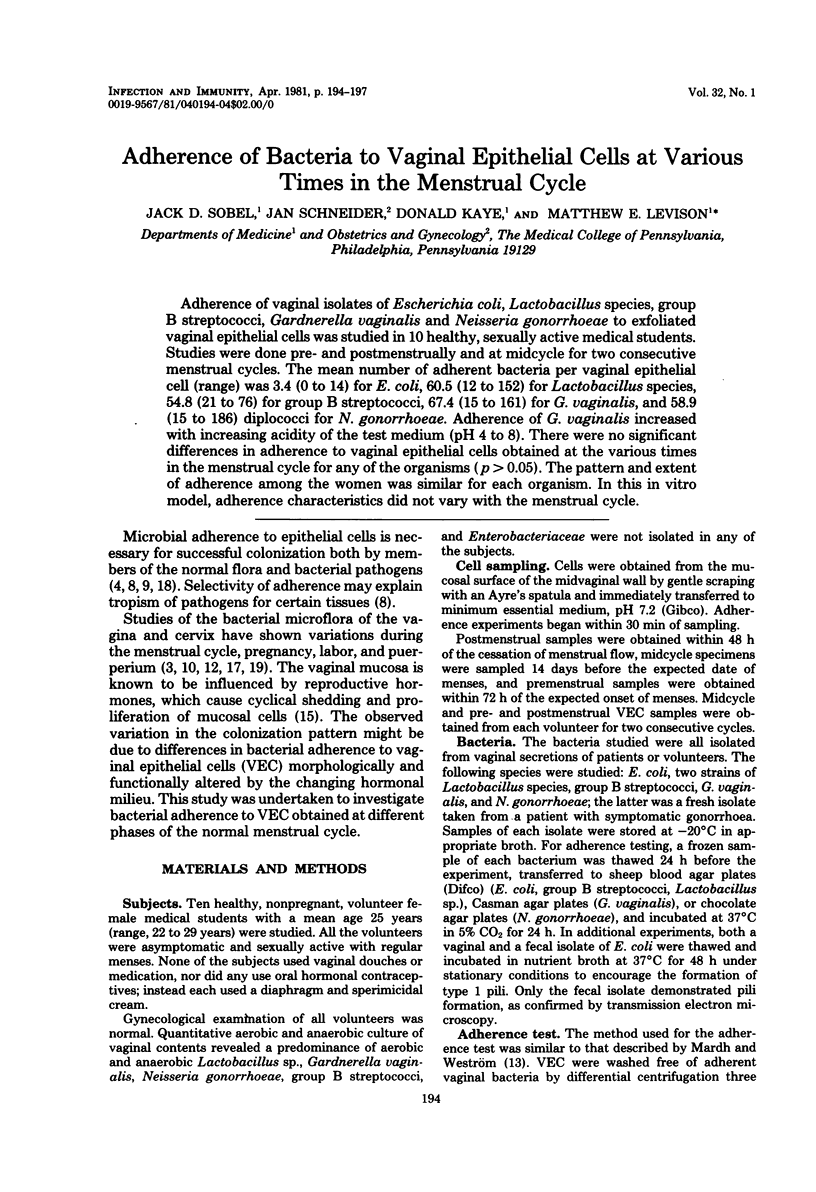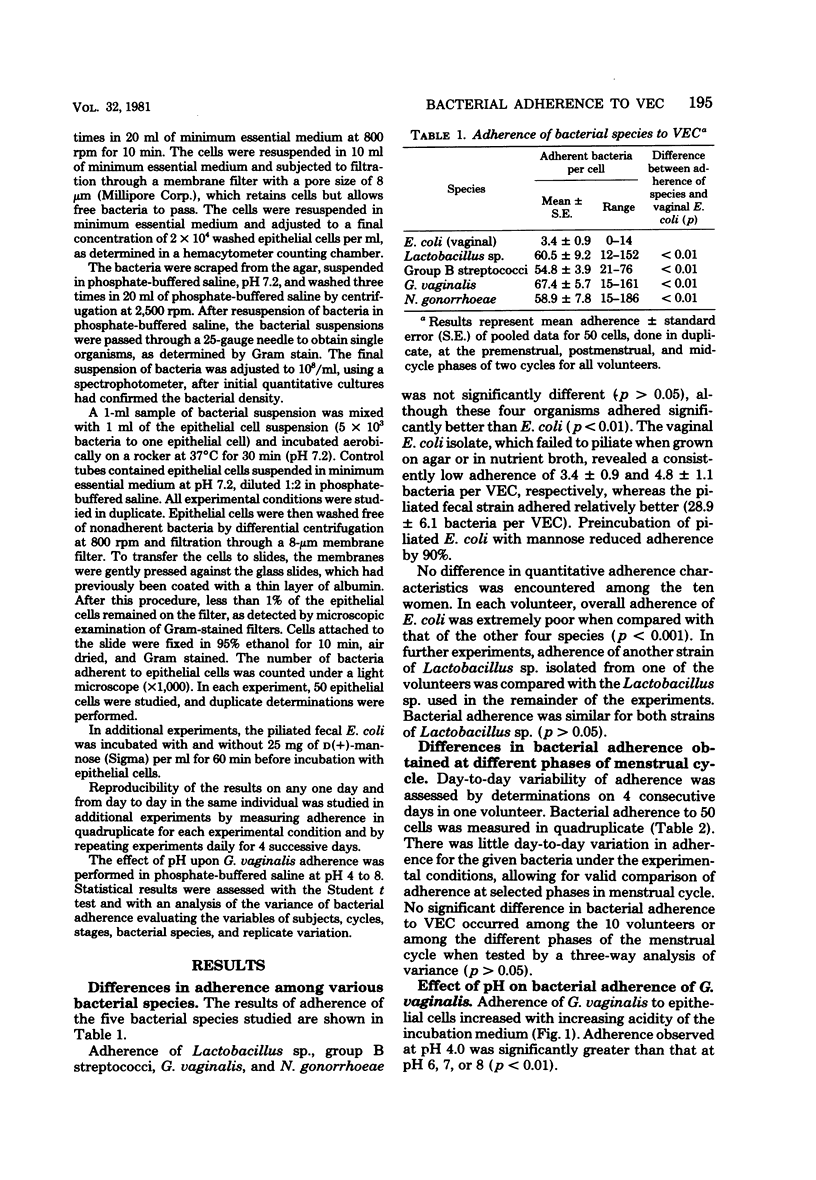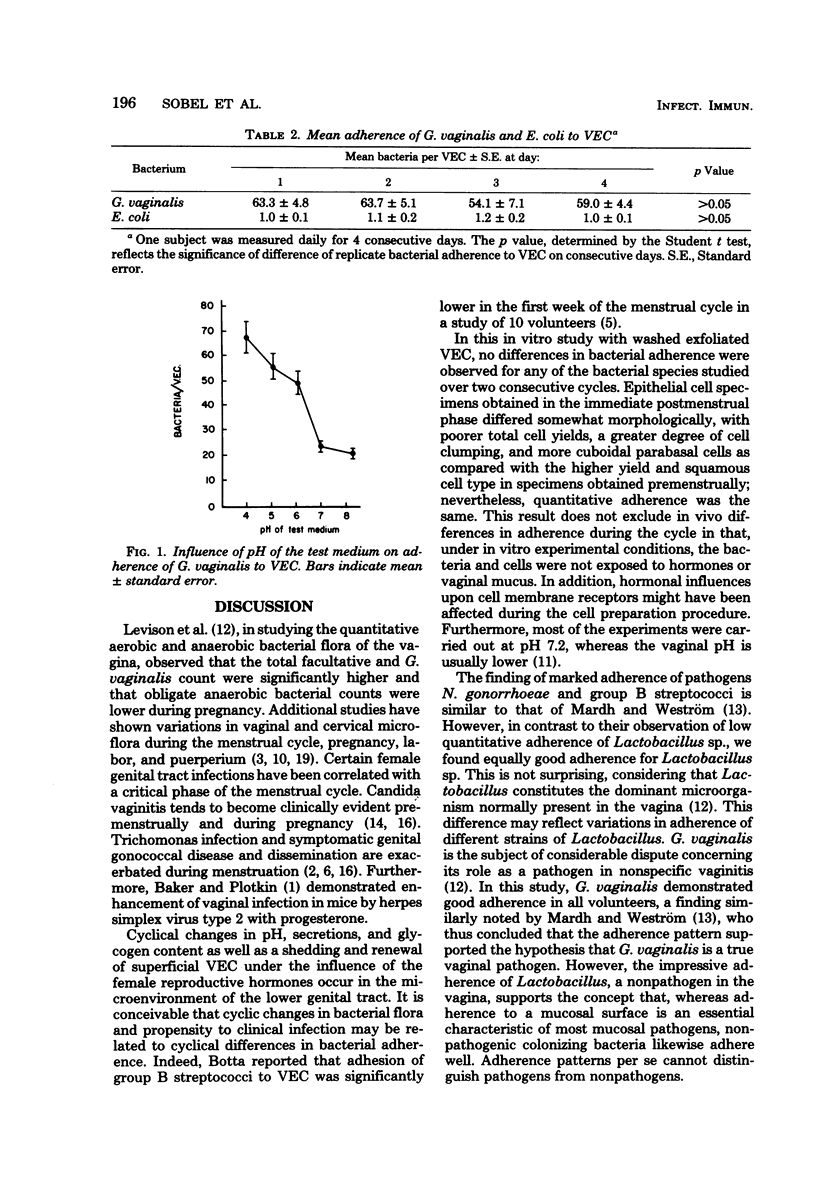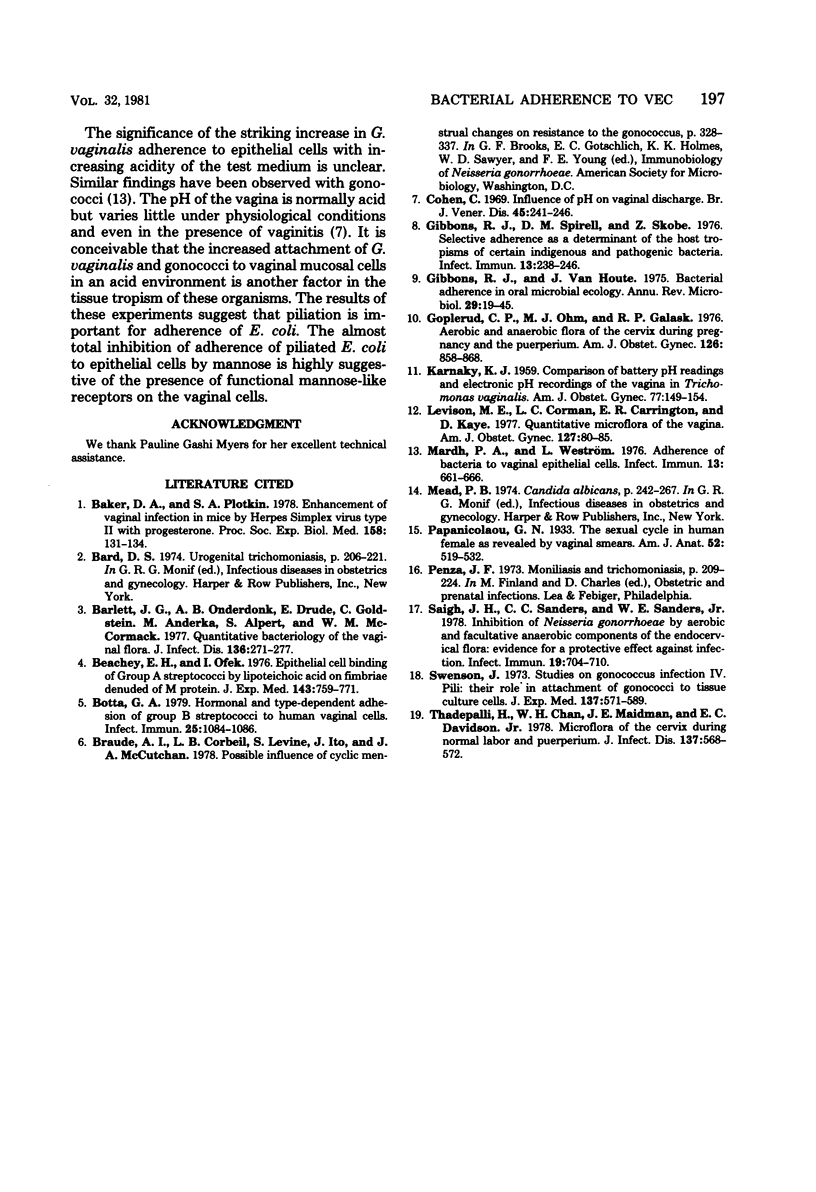Abstract
Adherence of vaginal isolates of Escherichia coli, Lactobacillus species, group B streptococci, Gardnerella vaginalis and Neisseria gonorrhoeae to exfoliated vaginal epithelial cells was studied in 10 healthy, sexually active medical students. Studies were done pre- and postmenstrually and at midcycle for two consecutive menstrual cycles. The mean number of adherent bacteria per vaginal epithelial cell (range) was 3.4 (0 to 14) for E. coli, 60.5 (12 to 152) for Lactobacillus species, 54.8 (21 to 76) for group B streptococci, 67.4 (15 to 161) for G. vaginalis, and 58.9 (15 to 186) diplococci for N. gonorrhoeae. Adherence of G. vaginalis increased with increasing acidity of the test medium (pH 4 to 8). There were no significant differences in adherence to vaginal epithelial cells obtained at the various times in the menstrual cycle for any of the organisms (p greater than 0.05). The pattern and extent of adherence among the women was similar for each organism. In this in vitro model, adherence characteristics did not vary with the menstrual cycle.
Full text
PDF



Selected References
These references are in PubMed. This may not be the complete list of references from this article.
- Baker D. A., Plotkin S. A. Enhancement of vaginal infection in mice by herpes simplex virus type II with progesterone. Proc Soc Exp Biol Med. 1978 Jun;158(2):131–134. doi: 10.3181/00379727-158-40156. [DOI] [PubMed] [Google Scholar]
- Bartlett J. G., Onderdonk A. B., Drude E., Goldstein C., Anderka M., Alpert S., McCormack W. M. Quantitative bacteriology of the vaginal flora. J Infect Dis. 1977 Aug;136(2):271–277. doi: 10.1093/infdis/136.2.271. [DOI] [PubMed] [Google Scholar]
- Beachey E. H., Ofek I. Epithelial cell binding of group A streptococci by lipoteichoic acid on fimbriae denuded of M protein. J Exp Med. 1976 Apr 1;143(4):759–771. doi: 10.1084/jem.143.4.759. [DOI] [PMC free article] [PubMed] [Google Scholar]
- Botta G. A. Hormonal and type-dependent adhesion of group B streptococci to human vaginal cells. Infect Immun. 1979 Sep;25(3):1084–1086. doi: 10.1128/iai.25.3.1084-1086.1979. [DOI] [PMC free article] [PubMed] [Google Scholar]
- Cohen L. Influence of pH on vaginal discharges. Br J Vener Dis. 1969 Sep;45(3):241–247. doi: 10.1136/sti.45.3.241. [DOI] [PMC free article] [PubMed] [Google Scholar]
- Gibbons R. J., Houte J. V. Bacterial adherence in oral microbial ecology. Annu Rev Microbiol. 1975;29:19–44. doi: 10.1146/annurev.mi.29.100175.000315. [DOI] [PubMed] [Google Scholar]
- Gibbons R. J., Spinell D. M., Skobe Z. Selective adherence as a determinant of the host tropisms of certain indigenous and pathogenic bacteria. Infect Immun. 1976 Jan;13(1):238–246. doi: 10.1128/iai.13.1.238-246.1976. [DOI] [PMC free article] [PubMed] [Google Scholar]
- Goplerud C. P., Ohm M. J., Galask R. P. Aerobic and anaerobic flora of the cervix during pregnancy and the puerperium. Am J Obstet Gynecol. 1976 Dec 1;126(7):858–868. doi: 10.1016/0002-9378(76)90674-8. [DOI] [PubMed] [Google Scholar]
- KARNAKY K. J. Comparison of battery pH readings and electronic pH recordings of the vagina in Trichomonas vaginalis infestation a report of 255 consecutive readings over a period of 143 days in one patient. Am J Obstet Gynecol. 1959 Jan;77(1):149–154. doi: 10.1016/0002-9378(59)90280-7. [DOI] [PubMed] [Google Scholar]
- Levison M. E., Corman L. C., Carrington E. R., Kaye D. Quantitative microflora of the vagina. Am J Obstet Gynecol. 1977 Jan 1;127(1):80–85. doi: 10.1016/0002-9378(77)90318-0. [DOI] [PubMed] [Google Scholar]
- Mårdh P. A., Westtöm L. Adherence of bacterial to vaginal epithelial cells. Infect Immun. 1976 Mar;13(3):661–666. doi: 10.1128/iai.13.3.661-666.1976. [DOI] [PMC free article] [PubMed] [Google Scholar]
- Saigh J. H., Sanders C. C., Sanders W. E., Jr Inhibition of Neisseria gonorrhoeae by aerobic and facultatively anaerobic components of the endocervical flora: evidence for a protective effect against infection. Infect Immun. 1978 Feb;19(2):704–710. doi: 10.1128/iai.19.2.704-710.1978. [DOI] [PMC free article] [PubMed] [Google Scholar]
- Swanson J. Studies on gonococcus infection. IV. Pili: their role in attachment of gonococci to tissue culture cells. J Exp Med. 1973 Mar 1;137(3):571–589. doi: 10.1084/jem.137.3.571. [DOI] [PMC free article] [PubMed] [Google Scholar]
- Thadepalli H., Chan W. H., Maidman J. E., Davidson E. C., Jr Microflora of the cervix during normal labor and the puerperium. J Infect Dis. 1978 May;137(5):568–572. doi: 10.1093/infdis/137.5.568. [DOI] [PubMed] [Google Scholar]


